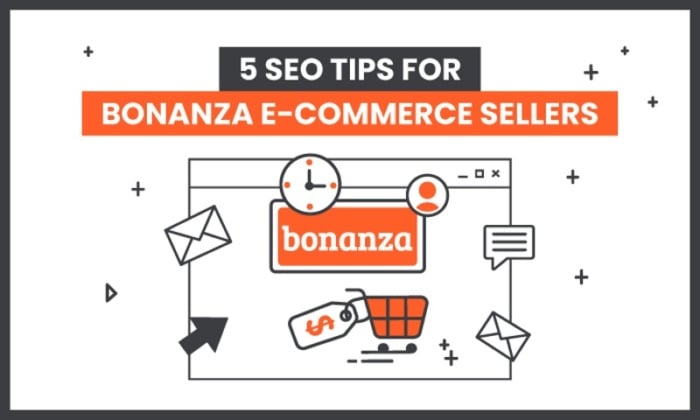
As an e-commerce seller, your business depends on your relationship with search engines.
Search engines are one of the first stops potential buyers make before purchasing an item. When your store is invisible to search engines, you simply don’t exist to the vast majority of your audience.
It’s a concerning thought and one reason e-commerce sellers spend so much time fixing and maintaining their on-site SEO.
Of course, understanding your platform is critical if you expect to stand out. If you’re serious about gaining that SEO edge, you need to know how search engines interact with your platform.
That’s where Bonanza comes in. It’s a great platform if you’re trying to avoid crowded, oversaturated sites like eBay and Etsy.
This article explores how Bonanza works and shows you how to drive traffic to your store from search engines.
What is Bonanza and How Does it Work?
As a platform for e-commerce sellers, Bonanza exists as a marketplace for all kinds of products.
The sheer variety of products you can sell on Bonanza is impressive. Bonanza lets merchants sell art, books, coins, jewelry, and everything in between.
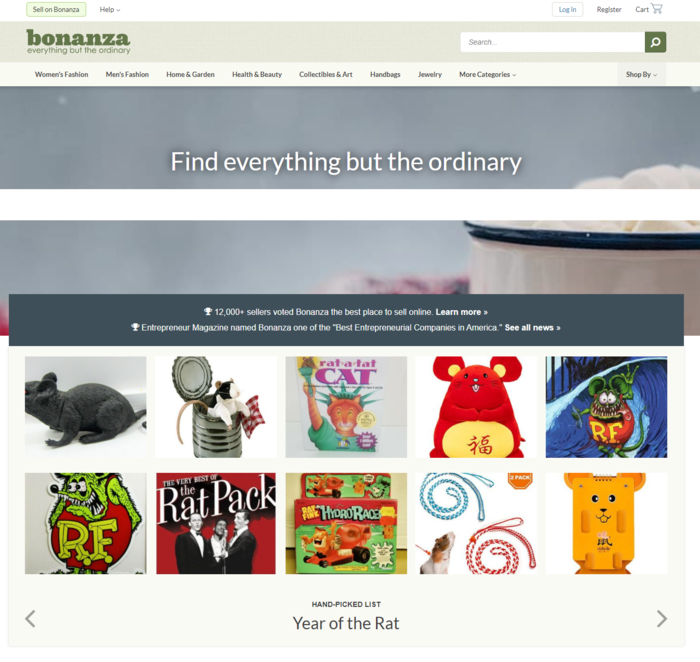
Bonanza functions similarly to many other e-commerce platforms. Sellers pay fees on both the price of the goods sold and the shipping fees associated with that purchase. However, you don’t pay unless your items sell—there are no listing fees or subscription costs.
You can advertise on the platform, but for our purposes, we’re going to focus on how to drive organic traffic to your business using SEO.
5 SEO Tips for Bonanza E-Commerce Sellers
To increase views on Bonanza, you need to provide customers with the most relevant information at the right time. Let’s look at how to optimize your Bonanza listings to drive organic traffic.
Use Strong Keywords in Bonanza Listings
As with all types of SEO, effective keyword usage is paramount when optimizing for Bonanza. But, before you can use keywords in your title and listing, you need to figure out what your keywords are.
Google Keyword Planner is a fantastic tool for testing the strength of specific key terms and phrases that you’re considering for your content.
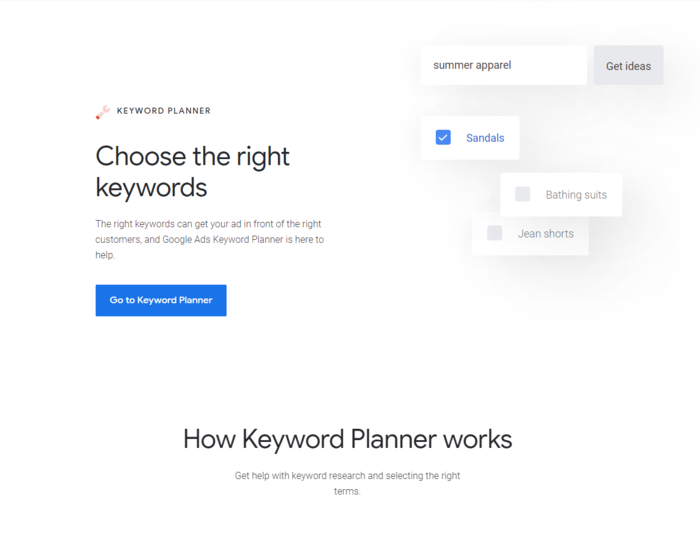
Let’s say your e-commerce store revolves around hiking. The word “hiking” itself might be a perfect fit for your content, but this presents a few problems.
The biggest issue here is hundreds, if not thousands, of other merchants selling hiking equipment on Bonanza. There’s little chance your content will stand out to either the algorithm or potential buyers based on that term alone.
Instead of using a broad keyword like “hiking,” you can use a strong keyword phrase that accurately describes your product. Suddenly, you’ve narrowed down your audience significantly.
Your audience is no longer anyone who types in “hiking” in a search engine.
You sell hiking boots to people actively looking for sales. By narrowing your focus to keywords related to that, you’re telling search engines your site is useful to a particular group of buyers. The more specific the solution, the more likely these search engines are to recommend it.
Don’t just look for keywords with high search volumes—seek out phrases that naturally fit into your site and signal genuine value.
By the way, if you’re looking for more in-depth keyword analysis, you can use my Ubersuggest tool for free here.
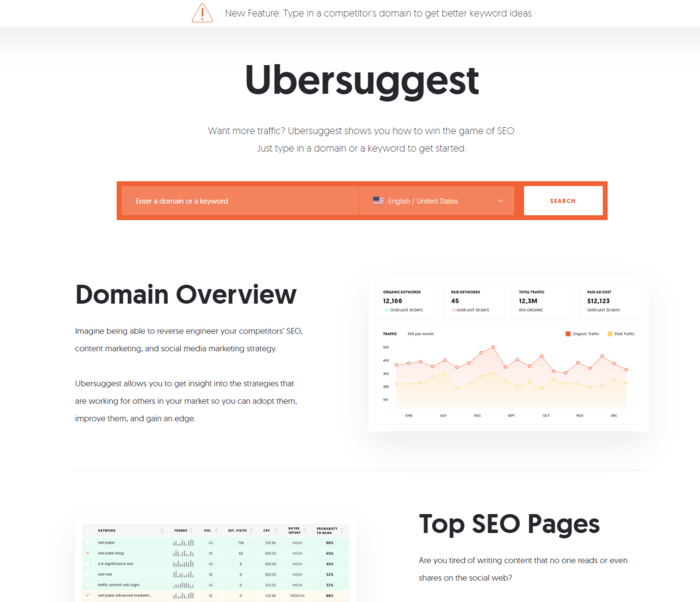
Include Quality Images
Discussions on SEO tend to revolve purely around the text. But, believing search engines only look at the text on your site would be a serious mistake.
The images on your site send data to search engine algorithms and can signal a higher quality experience for users.
Remember, search engines are in the business of having the right answer. When your business becomes the best possible fit for a potential buyer, search engines may give you the spotlight.
Image quality is essential. Take clear, well-lit pictures of your items with backgrounds that don’t distract. Use multiple images from different angles so your audience can fully see what they’re considering purchasing.
After you’ve taken your photos, change the file names to match your content. If you used a picture of a national park for your hiking store, don’t just call it DMG_33223.jpg. Change its name to something appropriate and relevant, such as hiking_boot_brand_style_name.
Make sure your image dimensions match the image size as displayed. This can impact load times for your site, which can have a dramatic effect on your on-site SEO.
Additionally, use the right format for your visual content. If you want to preserve background transparency, use PNG. Logos and icons should use SVG. For larger photos, use JPEG. This option preserves the image’s colors and clarity while taking up less storage space.
Speaking of which, reduce the file size of your images! If you’ve ever wondered why your pictures take so long to load, this is likely the culprit. Slow load times mean less attention from search engines.
Images also have alt text (or alt tag). Essentially, this is the information conveyed to users who can’t see pictures. Whether they’ve disabled images or they’re using a screen reader due to a visual impairment, alt text helps provide information on that image.
Search engines use alt text to vet the quality of a site. This means if you don’t have alt text (or you do, but it’s nonsensical), you’re probably missing out on free traffic.
Choose Your Item Titles Carefully
When shopping online, you likely see a lot of products with titles that are a list of keywords rather than a clear title like you’d use on, say, a blog post. This isn’t the way to go.
I’ve found a simple way to help e-commerce sellers understand the value of item titles.
Think about your store from a search engine’s perspective. Your site description is pretty similar to an article or blog post as far as they’re concerned. Search engine algorithms see everything as content, and they want to provide positive experiences for users.
If you created a blog post on hiking titled “hiking positives why you should hike how to like hiking,” would a search engine find that valuable? Of course not. You’d probably title that post something like “Making the Most of Hiking” or “The Awesomeness of Hiking.”
For articles and blogs, you likely already take the time to build compelling, relevant, engaging content regularly because you know how valuable it is to both a search engine and your audience.
Do the same for your store listings—research using the Keyword Planner. Run a competitor analysis and see which titles excel and which are failing.
Above all, your item title and product descriptions need to be helpful. When they’re helpful, they’re valuable— and when you’re valuable, search engines are more willing to pay attention.
It’s also worth noting paying attention to the differences in the buying cycle. Online shoppers with low buyer awareness need lots of convincing. For example, a buyer that searches for “hiking boots” may still be researching their options and not yet ready to buy, while someone who searches for “Women’s Newton Ridge Waterproof Amped Hiking Boot” is likely ready to buy.
If they aren’t familiar with your product, you’ll need to focus on education first.
Start with key features, product usage, and brand guarantees. This makes your product copy both user-friendly and valuable.
Add Product Features and Benefits
Now that we’ve established that product descriptions function like any other piece of content, it’s time we broke down how to craft a valuable description.
Start with product features. From an SEO perspective, potential buyers are searching for perks and features when they use search engines.
After all, they aren’t just looking for “boots.” They’re looking for “high-quality, comfortable boots.”
The mistake some sellers make is assuming the list of features is enough. That list is just one piece of the puzzle. What makes a product description stand out to a search engine’s algorithm is contextually appropriate copy.
These aren’t just high-quality, comfortable boots. They’re boots that stand up to the harshest of winters. They’re boots you can wear for hours on end. Maybe they are waterproof.
While Bonanza allows you to fill out boxes with item traits and listing details, they also give you space to write out a description. Provide details you couldn’t give in the boxes.
For instance, you can put the boots’ size and material in the traits, but you can’t tell them the heel height. Put that type of information in your written description.
When you create a clear picture of the experience with a particular product, you bring a high level of authenticity to the shopping experience.
If your content checks some of the keyword boxes but isn’t valuable, your site won’t get organic traffic for long.
Grow Using Content Creation
One of the most frustrating challenges you’ll deal with as an e-commerce seller is being unable to innovate. As a business owner, you want every business-building tool at your disposal. Which brings up the question: at what point do you start to expand your marketing efforts?
After all, you don’t just want to beat your competitors by a small margin. You want to dominate your e-commerce space and have your site on the first page of a user’s search engine results.
Commit to creating a blog for your site. It doesn’t have to be fancy, but it should be value-driven.
You could use a free option like WordPress.com and write two articles a week on topics your audience cares about—and link to relevant items in your Bonanza store. You’ll have over 100 articles in a year, all linking to your Bonanza store, which shows search engines a series of healthy links to your store.
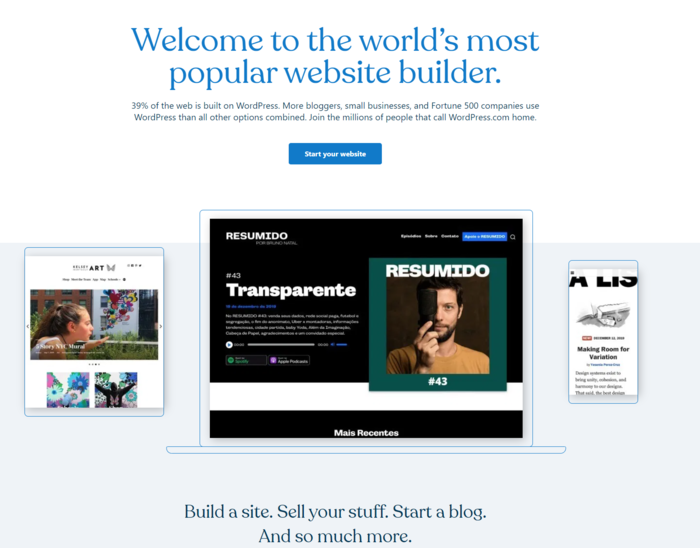
More high-quality links mean validation, plus there’s the added perk of adding another layer to your marketing funnel.
You can even use this content to collect email addresses for your newsletter. Use that to drive repeat business, and before you know it, you’ve built a truly profitable ecosystem.
Conclusion
SEO is just as crucial for e-commerce stores like Bonanza as it is for other types of content. Without solid SEO for your store, consumers probably won’t find your products.
Understand what users need from their search experience. Take the time to create a user-friendly product page. Offer engaging content and create a store that puts the customers’ needs first.
You’ll never be able to “trick” search engines. But with enough patience and hard work, you can get search engines to work for you and drive traffic to your Bonanza store.
How have you found success on Bonanza?
The post 5 SEO Tips For Bonanza E-Commerce Sellers appeared first on Neil Patel.
About us and this blog
We are a digital marketing company with a focus on helping our customers achieve great results across several key areas.
Request a free quote
We offer professional SEO services that help websites increase their organic search score drastically in order to compete for the highest rankings even when it comes to highly competitive keywords.
Subscribe to our newsletter!
More from our blog
See all postsRecent Posts
- Web Hosting September 26, 2023
- Affiliate Management September 26, 2023
- Online Presence Analysis September 26, 2023

